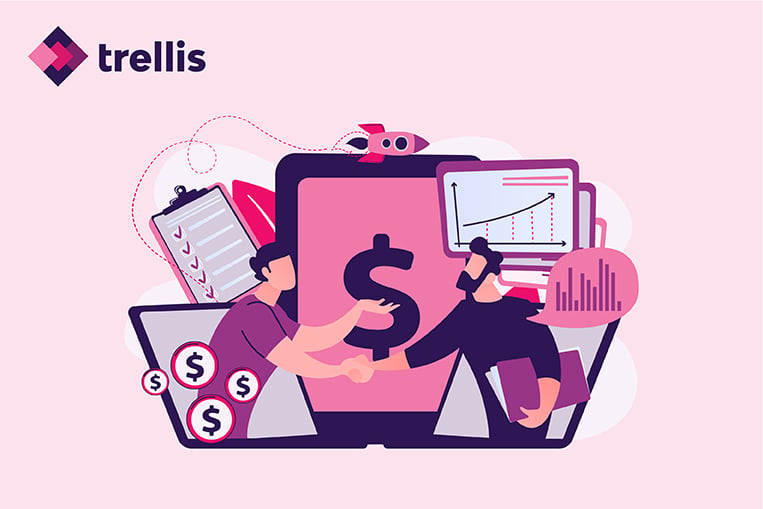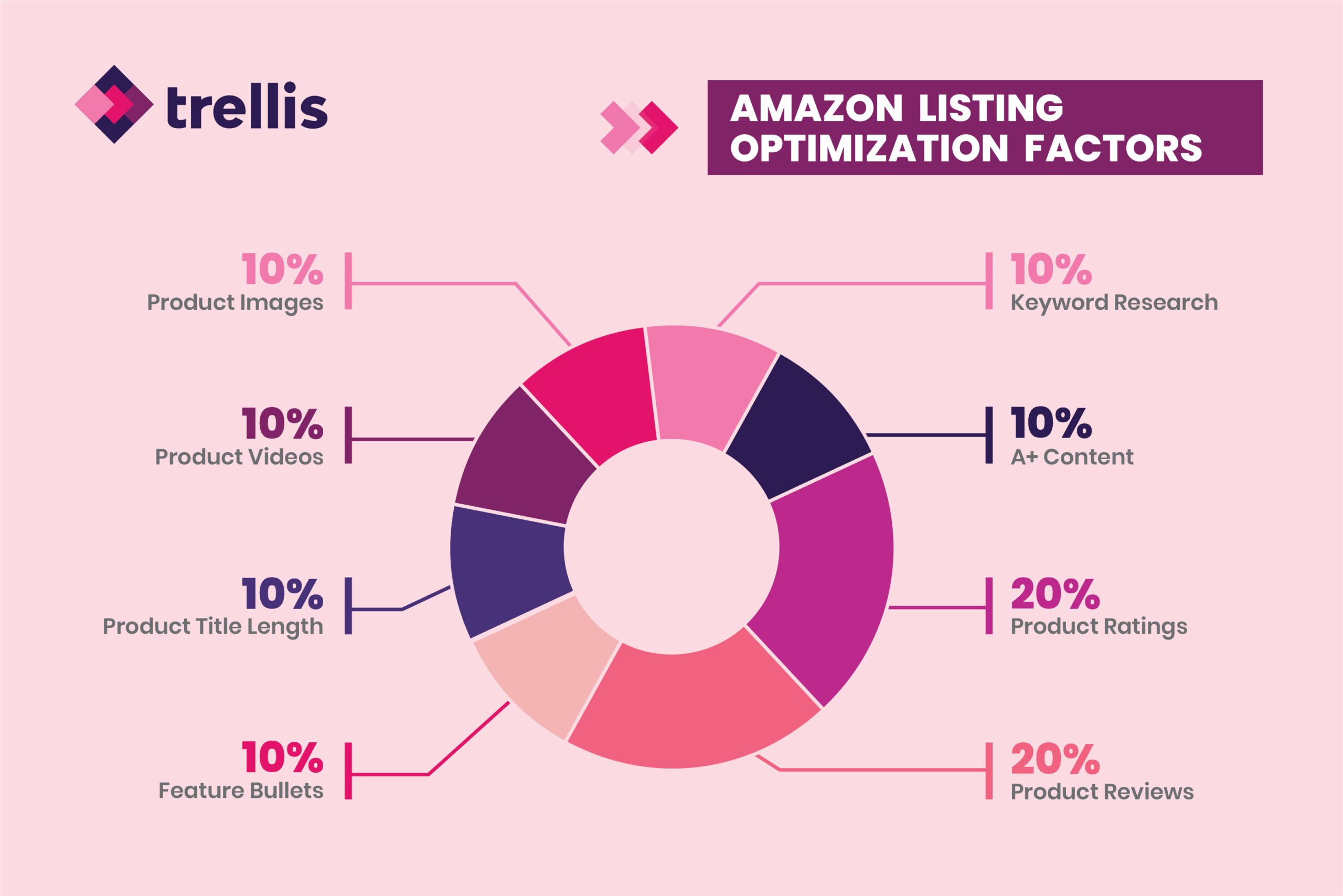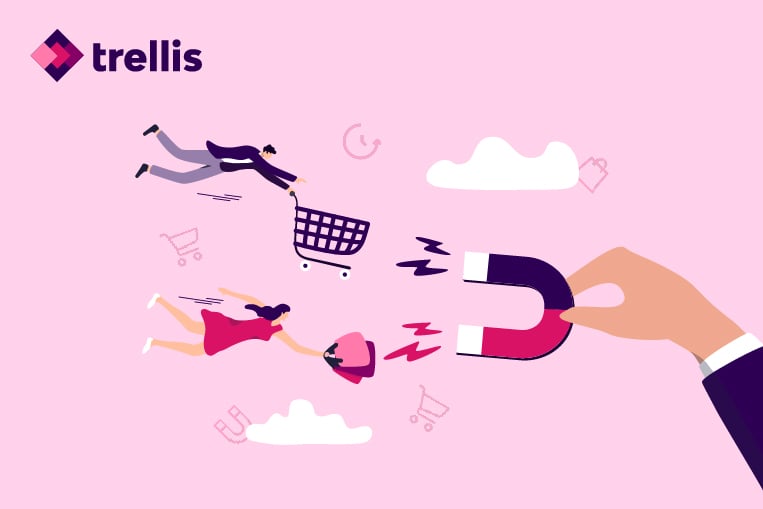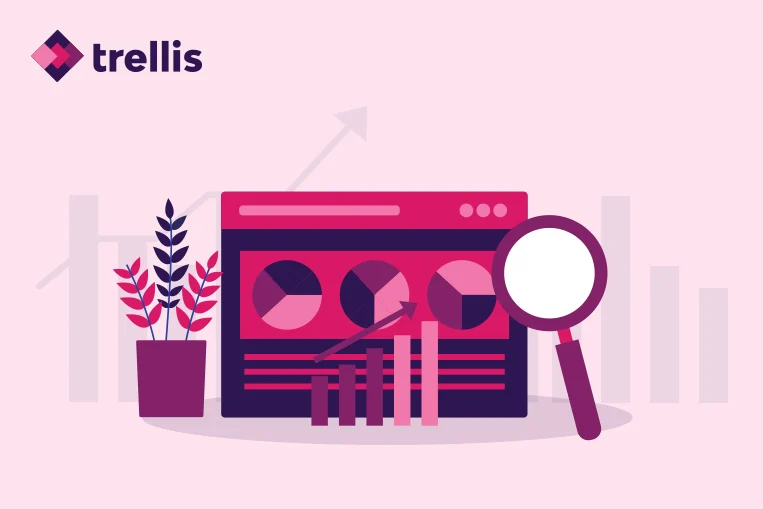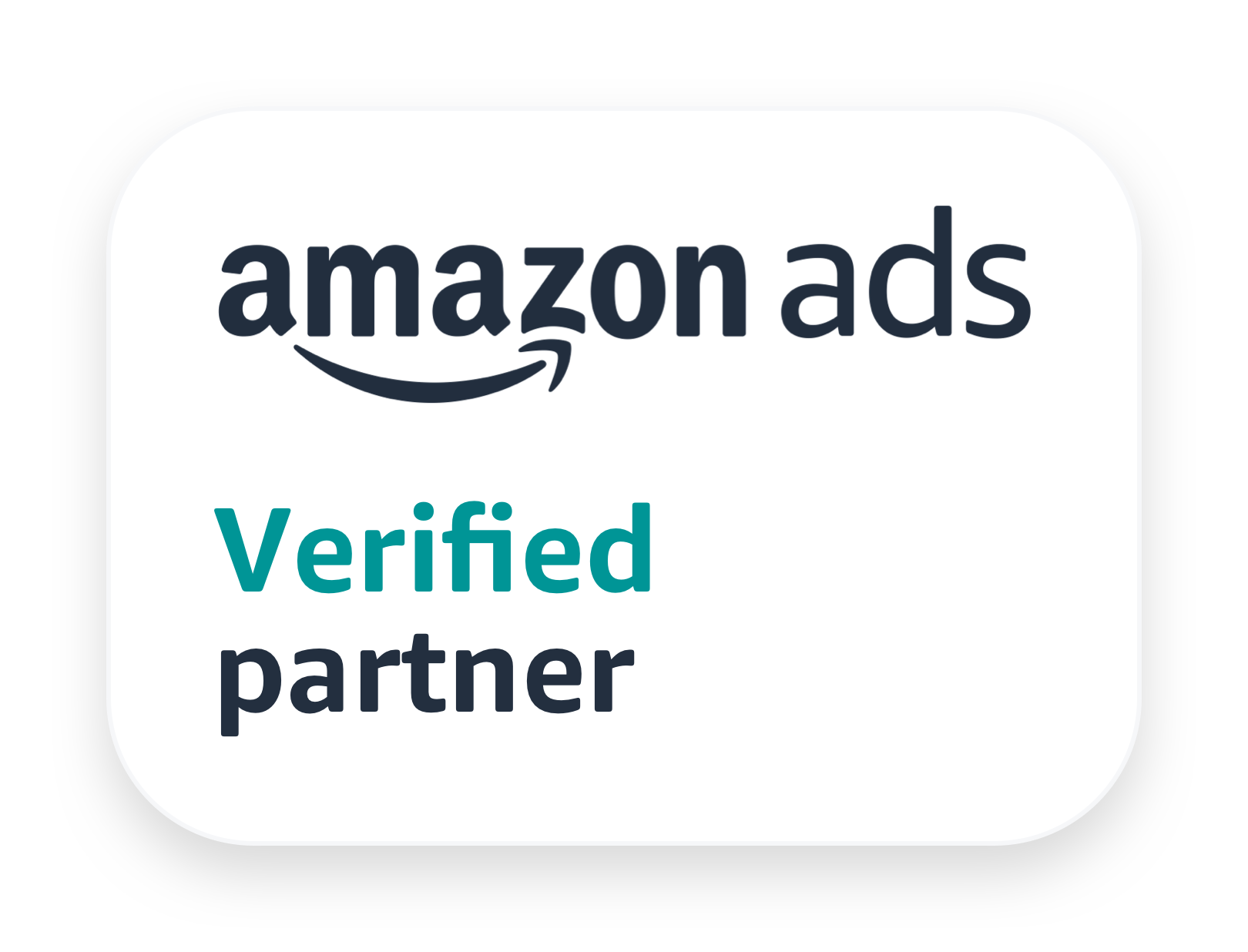You can no longer win on Amazon solely by being in the right place at the right time. You need to be able to compete on value and on price.
Your close proximity to competitors on Amazon means buyers can easily find value for their money, forcing sellers to become hyper-competitive in how they list their products. You likely are already optimizing your product images, your title, your content, and your reviews, but how much have you tested the price of your products? Likely not enough considering that 80% of online shoppers say that they compare prices before purchasing a product.
Driven by this problem, we did what any merchandising automation company would do, and we built a solution that would give users daily control of their optimal price. We explored a way to seamlessly gather and structure pricing data to automate a product’s cost based on your business’ objective.
After speaking with dozens of clients and testing this system in thousands of scenarios, we’re excited to introduce Dynamic Pricing!
What is Dynamic Pricing?
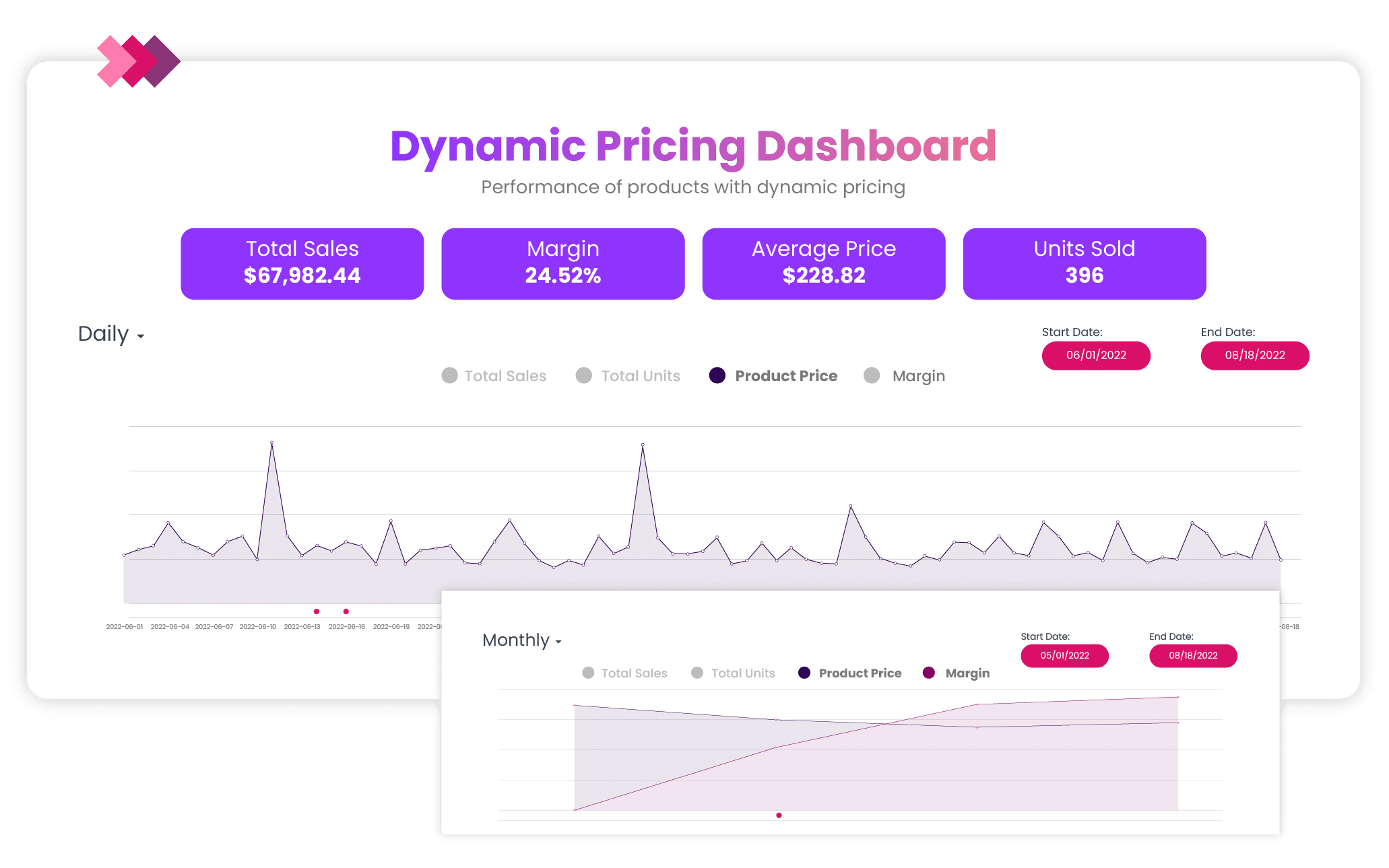
Dynamic pricing shouldn’t start and end at the Buy Box. Private labels and sellers across Amazon need access to the dynamic pricing that big brands and airlines have been using for years.
This means being able to maximize the profitability on your best sellers, increase sales volume on your new products, and price competitively on your introductory products.
Our system not only provides our customers the analytics to price effectively, but it adjusts prices on a daily basis for its entire lifecycle.
Easy to use and cost-effective, you no longer have to price your products using a cost-plus pricing strategy or by undercutting competitors. You don’t have to take your products to expensive focus groups or manually test them without a reliable framework. Now you can get a price driven by data that gets updated every day.
How Does Dynamic Pricing Work?
Dynamic Pricing structures your data through a series of tests. Once the data is modelled we reverse engineer your objective, build pricing profiles, and change the price of your products as needed.
Reverse Engineering Your Objective
Dynamic pricing uses your goal as a north-star but uses your data to ensure that you aren’t pricing less or more than you have to get there.
By listening to our customers over the last 2 years, we’ve established three goals you can optimize for:
- Increasing sales volume,
- Maximizing profit, or
- Challenging a competitor.
By choosing a goal for each product, we can find and select the right price.
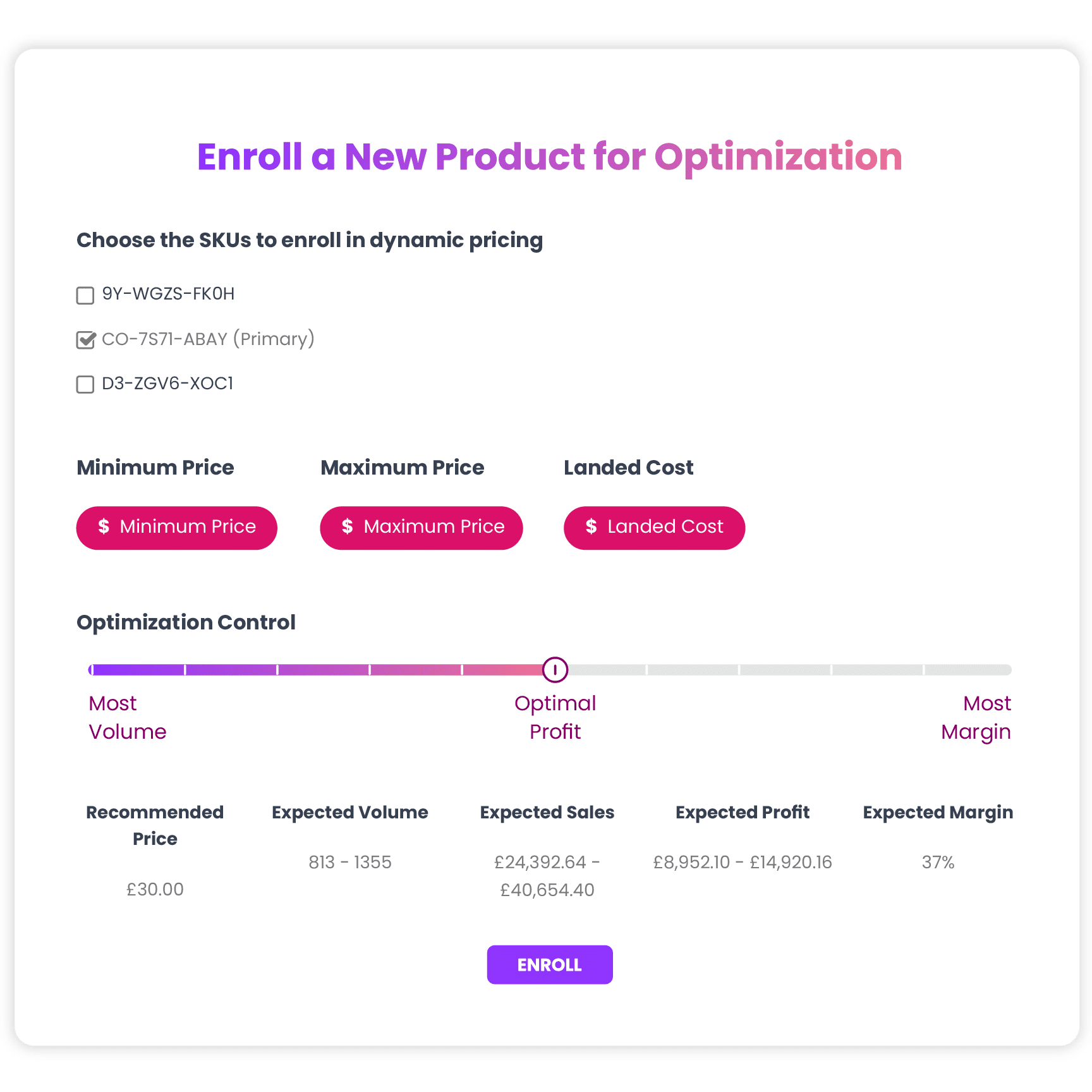
Building Pricing Profiles
Starting out, you likely haven’t made enough pricing changes on your products for accurate projections. Unsurprisingly, we’ve created a method to automate this step. By taking a few data points from you, importing any historical data, and understanding your goal, we test prices to build a Pricing Profile.
This modelling helps us to find outliers and trends with statistical significance. The system then analyzes this data and connects your goals with these opportunities.
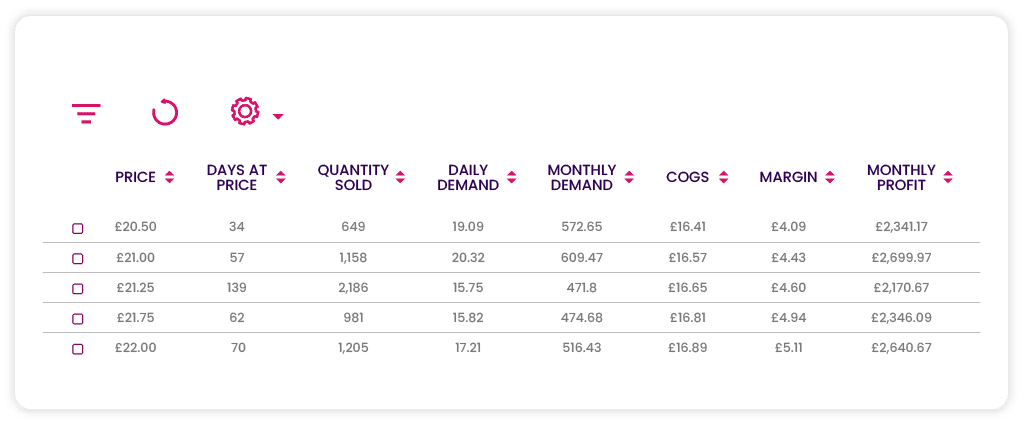
Dynamic Pricing
While Pricing Profiles are completely available to you, dynamic pricing leverages it daily without any human hand-holding. Once you set how fast you want your product to sell and at what profit, our system changes your prices daily.
This monitoring is increasingly important as over 2.5 million price changes happen a day. That means an advantageous price today doesn’t guarantee a prosperous price tomorrow. Dynamic pricing keeps up with the trends, seasonality, and competitors to ensure you are the best value for your customers’ money.
5 Common Use Cases of Dynamic Pricing
Looking for a specific solution for one of your products? We have 5 common use cases for Dynamic Pricing that might help.
1. Identify Goldilocks Pricing
As products become popular with customers, you will want to find the price that will move the most products for the most amount of money.
If you price too low you may move warehouses of products but your profit margins may be small. While pricing your products too high, might mean great individual margins but small profits overall due to low sales volume.
This is where Goldilocks Pricing comes in. It is a “just right” price that doesn’t make the most overall sales or the highest margins per product but will make a huge splash on your bottom line when everything is said and done.
2. Market Penetration, Loss Leaders, and Product Launches
Looking to make a splash in your category and have a strategy to convert first-time buyers to repeat customers? Increasing sales volume likely is a good place to start.
However, making matters a bit more complicated, this price isn’t always the lowest price. Many will see the lowest price as a poor quality product, while in other circumstances you may have dropped your price much lower than you had to.
With Dynamic Pricing, you are able to find the price that will make some noise without harming your bottom line.
3. Competitor Bidding
By identifying your competitors, you can bid a percentage below or above them.
Competitor bidding is a strong use-case if you have:
- An established product that you’re looking to protect,
- A specific competitor that you want to force out of the market,
- An industry you want to disrupt and need a low price to mitigate hesitancies.
4. Stock Management
Amazon often penalizes products and accounts that are regularly out of stock. To them, it is an issue if their marketplace has sellers who can’t generate purchases and if you’re out of stock there’s nothing for Amazon customers to buy. This means your organic rank can drop and your listing may disappear altogether.
To avoid being one of these sellers, you can adjust your price to slow down sales.
By leveraging Dynamic Pricing projections, you can also see how many sales you should get over a certain period. Using this data you can set a price that will slow down sales until you expect a restock. In general, this functionality can help you plan your supply chain better.
5. Combine With Advertising
Upfront, advertising can help you gather data on optimal pricing, accelerating the advancement of your pricing profiles.
In the long-term, advertising can be used by leveraging your ideal price at scale. This means if you’re trying to speed up sales or scale your goldilocks price, a strong advertising engine can help.
Inversely, Dynamic Pricing can make sure that your products cost what people want to pay. If your products are overpriced, Dynamic Pricing could lower it to find a price that improves your conversion rate exponentially more than your average order value decreased.
Alternatively, if your products’ price is too low, dynamic pricing will raise the price. This increase may lead to a small shift in sales volume but come with a significant decrease in ACoS as you move larger orders.
What’s Next?
If you’ve been thinking about a re-pricer or dynamic pricing, this might be the time to pull the trigger.
Trellis offers a low barrier to entry to pricing your products simply and effectively.
Even if you aren’t ready and are looking to make the leap in a month or two, it could be a good time to start building profiles and collecting data.
Packages start at $299 and you could easily see that money back in pricing optimizations.
Getting Started in 1, 2, 3
1. Onboard
Request access below. We are currently providing personalized onboarding so getting started is easy.
2. Build Pricing Profiles
First, decide what your high-priority products are. Then choose an objective for each product: are you looking to maximize profit, increase sales, or bid against a competitor? Select the objective and enroll those products to build a profile.
3. Dynamic Pricing
After 2-4 weeks, your profiles are ready. Now, you can start to change prices daily by enrolling your products. Follow along with the changes to see how your margins improve and see what opportunities present themselves.
Talk to Our Team
If you run into any issues, chat with our customer success team. From onboarding to dynamic pricing use cases, if you have any questions, we can help you through them. Our team is dedicated to setting you up for success.
